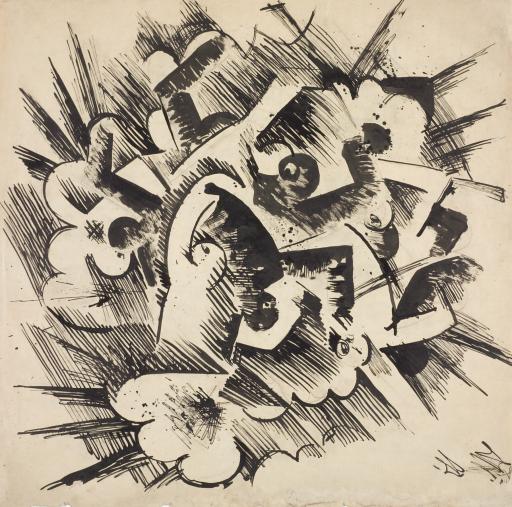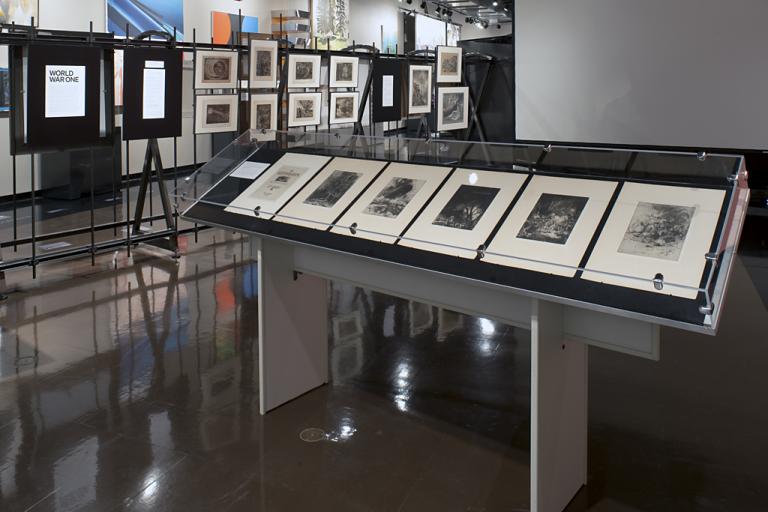Explosion, Otto Dix
Artwork Overview
Otto Dix, artist
1891–1969
Explosion,
1918
Where object was made: Germany
Material/technique: wash; ink; graphite; wove paper
Dimensions:
Image Dimensions Height/Width (Height x Width): 38.5 x 39.5 cm
Image Dimensions Height/Width (Height x Width): 15 3/16 x 15 9/16 in
Sheet/Paper Dimensions (Height x Width): 38.5 x 39.5 mm
Sheet/Paper Dimensions (Height x Width): 15 3/16 x 15 9/16 in
Mat Dimensions (Height x Width): 24 x 24 in
Image Dimensions Height/Width (Height x Width): 38.5 x 39.5 cm
Image Dimensions Height/Width (Height x Width): 15 3/16 x 15 9/16 in
Sheet/Paper Dimensions (Height x Width): 38.5 x 39.5 mm
Sheet/Paper Dimensions (Height x Width): 15 3/16 x 15 9/16 in
Mat Dimensions (Height x Width): 24 x 24 in
Credit line: Museum purchase: Helen Foresman Spencer Art Acquisition Fund
Accession number: 2006.0100
Not on display
If you wish to reproduce this image, please submit an image request








